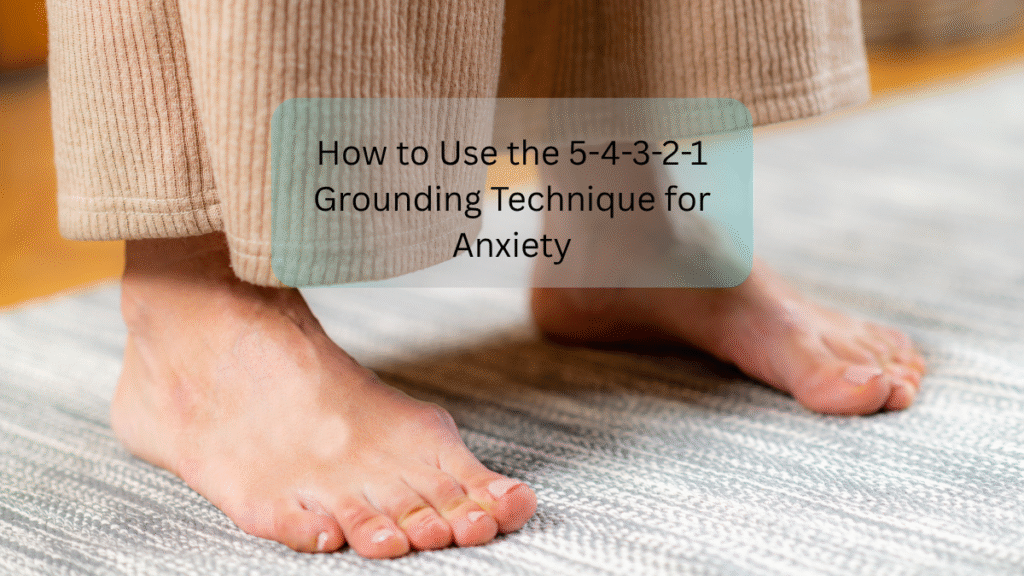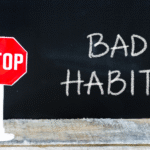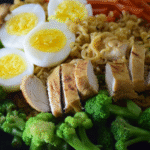5-4-3-2-1 Grounding Technique
Anxiety can feel like a tidal wave—overwhelming, all-consuming, and impossible to escape. Whether it’s a sudden panic attack or persistent worry, finding ways to ground yourself in the present moment can be a game-changer. One of the most effective tools for managing anxiety is the 5-4-3-2-1 grounding technique, a simple yet powerful method to bring your mind back to the here and now.
In this post, we’ll break down how this technique works, why it’s so helpful, and how you can use it anytime, anywhere—whether you’re at home, work, or even in the middle of a crowded grocery store.
What Is the 5-4-3-2-1 Grounding Technique?
The 5-4-3-2-1 grounding technique is a mindfulness exercise designed to reduce anxiety by engaging your five senses. It shifts your focus away from racing thoughts and into the present moment, helping you regain control when emotions feel overwhelming.

The process is straightforward:
- 5 things you can see
- 4 things you can touch
- 3 things you can hear
- 2 things you can smell
- 1 thing you can taste
By systematically engaging each sense, you interrupt anxious thought patterns and anchor yourself in reality.
Why Does the 5-4-3-2-1 Method Work for Anxiety?
Anxiety often pulls us into the future—imagining worst-case scenarios or replaying past mistakes. The 5-4-3-2-1 technique works because it forces your brain to focus on sensory input rather than spiraling thoughts.
Research suggests that mindfulness and sensory grounding can lower cortisol levels (the stress hormone) and activate the parasympathetic nervous system, which helps calm the body’s fight-or-flight response (source: Harvard Health).
Unlike deep breathing or meditation, which can sometimes feel difficult during high anxiety, this method is quick, tangible, and doesn’t require prior practice.
Step-by-Step Guide to Using the 5-4-3-2-1 Technique
Let’s walk through how to use this grounding exercise effectively.
1. Acknowledge Your Anxiety
Before starting, take a deep breath and recognize that you’re feeling anxious. Naming your emotion can reduce its intensity.
2. Engage Your Senses Slowly
Follow these steps in order:
5 Things You Can See
Look around and name five objects in your environment. They can be ordinary—a coffee mug, a tree outside, a picture frame. The goal is to observe details (e.g., “I see a blue pen with a chewed cap”).
4 Things You Can Touch
Notice four textures or surfaces you can feel. This could be your shirt fabric, the coolness of a table, the softness of a pet’s fur, or the weight of your phone in your hand.
3 Things You Can Hear
Listen for three distinct sounds—birds chirping, distant traffic, the hum of a refrigerator. Even subtle noises count.
2 Things You Can Smell
Identify two scents. If you’re indoors, this might be laundry detergent, coffee, or fresh air from a window. If smells aren’t obvious, recall a comforting aroma (like your favorite food).
1 Thing You Can Taste
Focus on your mouth’s current taste—maybe toothpaste, gum, or the lingering flavor of your last meal. If nothing stands out, take a sip of water or chew mint gum to engage this sense.
Video Credits
3. Take a Deep Breath and Check In
After completing the steps, pause and assess your anxiety level. You might not feel 100% calm, but most people notice a significant shift in focus.
When to Use the 5-4-3-2-1 Grounding Technique
This method is versatile and can help in many situations:
- During a panic attack (to prevent escalation)
- Before a stressful event (like public speaking)
- When overthinking at night (to quiet racing thoughts)
- In crowded spaces (to combat sensory overload)
Pro tip: Pair it with movement snacks (short bursts of physical activity) if you’re feeling restless. A quick stretch or walk can enhance grounding effects.
Common Challenges & How to Overcome Them
“I Can’t Focus Enough to Do It!”
If anxiety feels too intense, start smaller. Try just 5-4-3 (see, touch, hear) and build up.
“It Doesn’t Work for Me.”
Give it a few tries. Like any skill, grounding gets easier with practice. You can also modify it—some people prefer counting breaths between steps.
“I Forget the Steps When Anxious.”
Keep a note in your phone or on a sticky note with the sequence until it becomes second nature.
Final Thoughts
The 5-4-3-2-1 grounding technique is a lifeline for anxiety because it’s simple, science-backed, and always accessible. Whether you’re dealing with everyday stress or intense panic, this tool helps you reclaim the present moment.
Your Turn: Have you tried the 5-4-3-2-1 method? Share your experience in the comments! For more anxiety-relief tips, check out our guide on [movement snacks for stress relief] or subscribe to our newsletter for weekly wellness insights.











